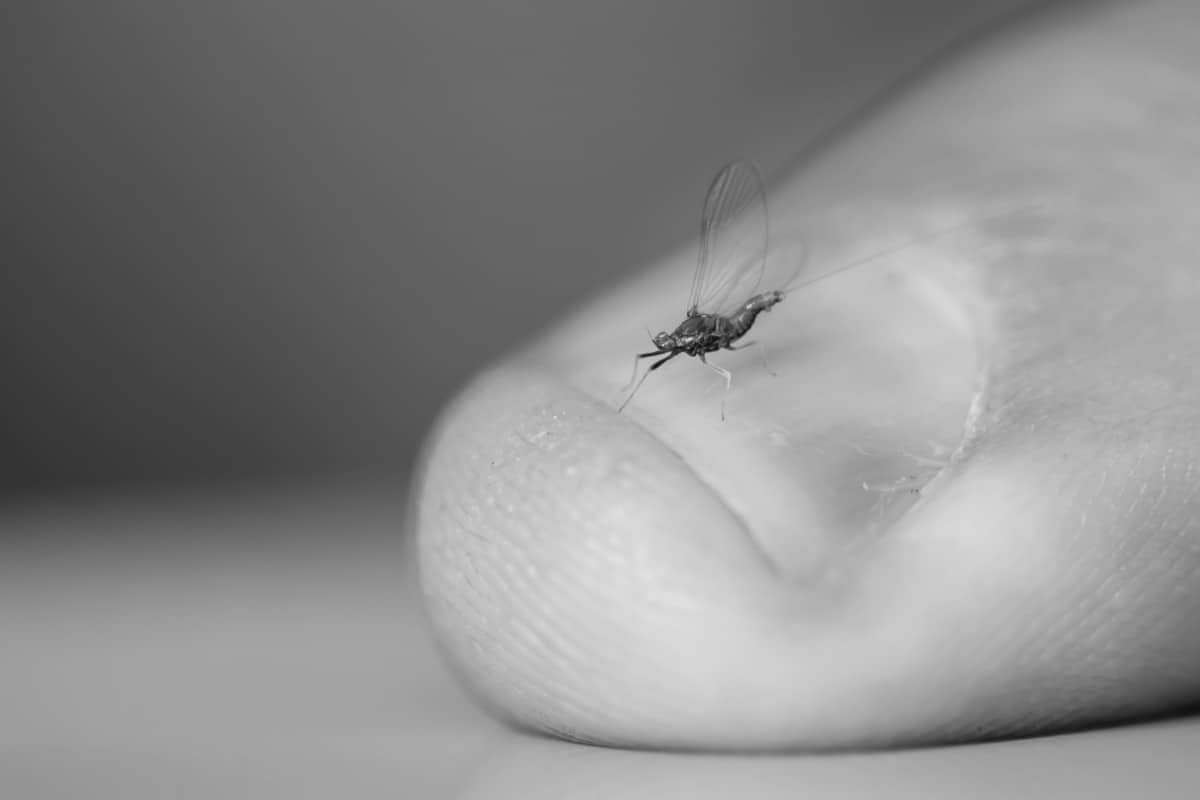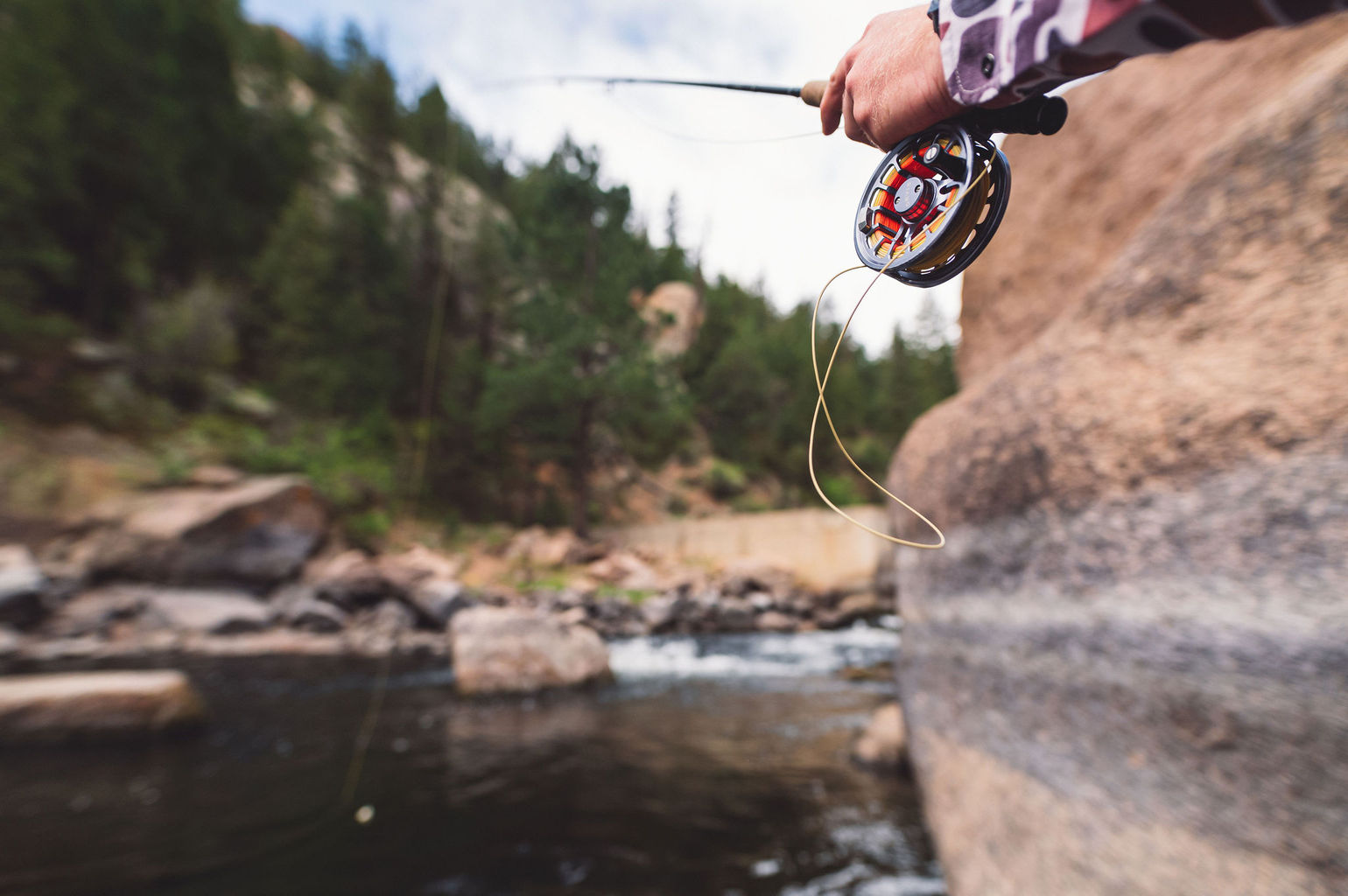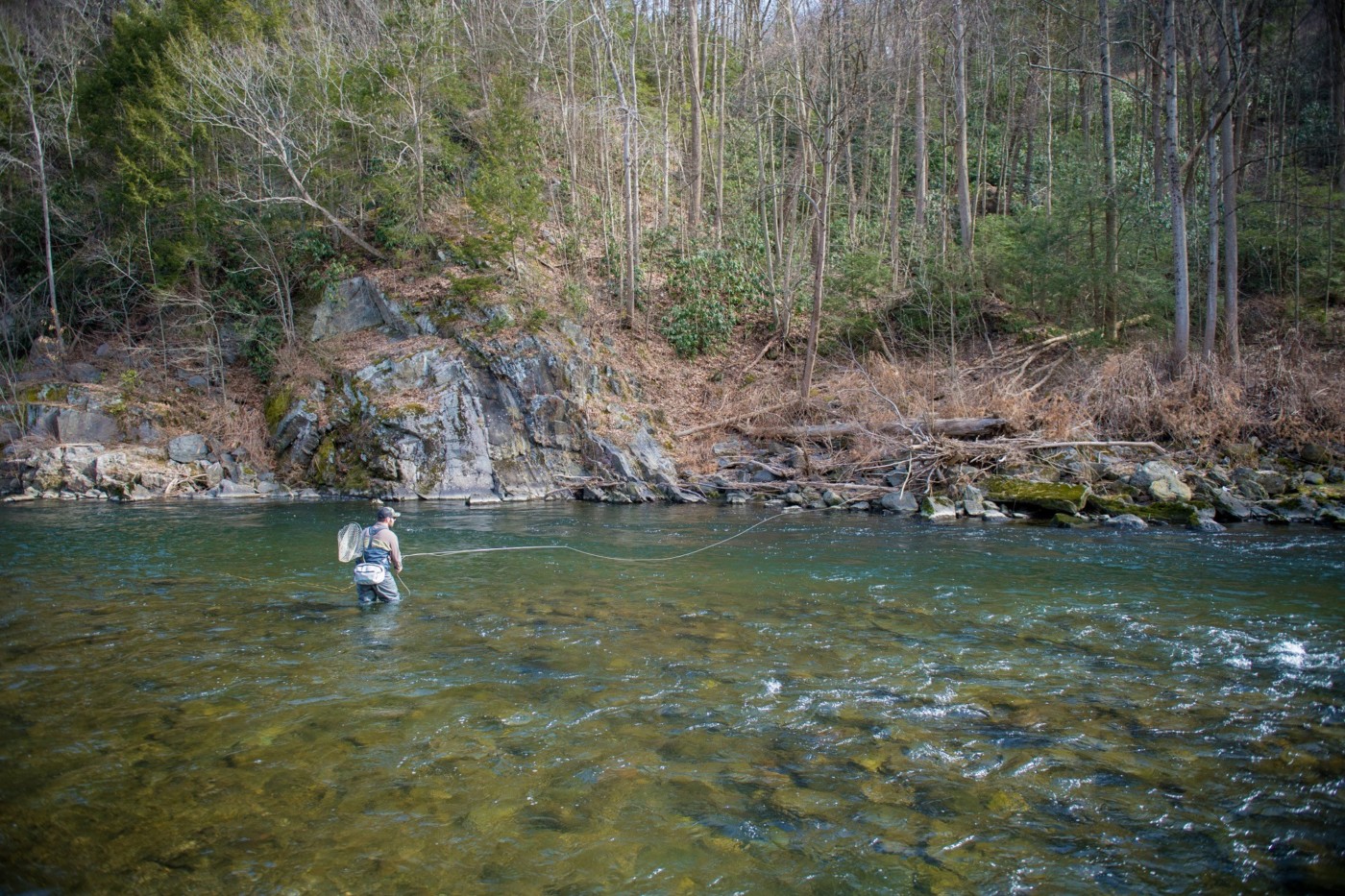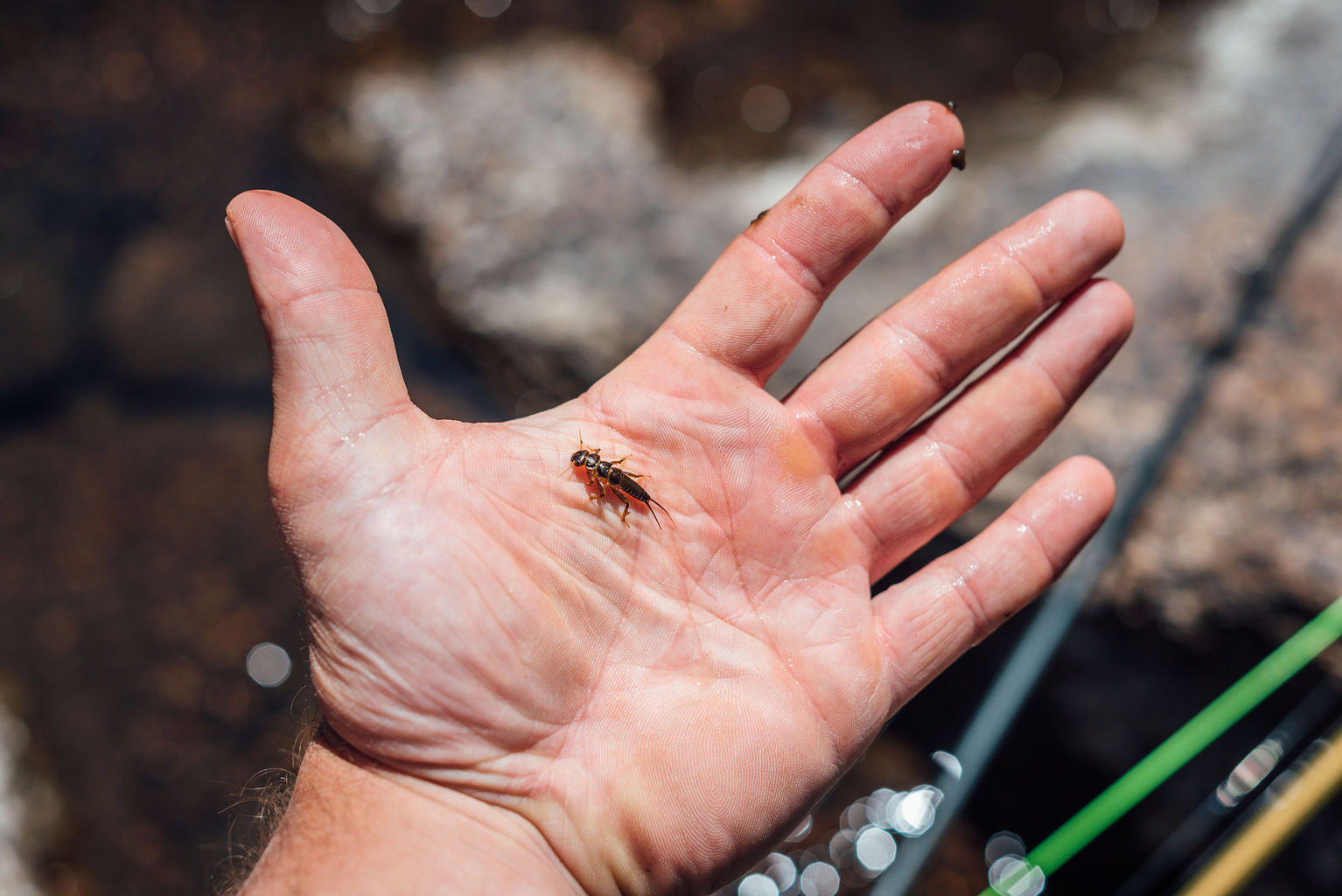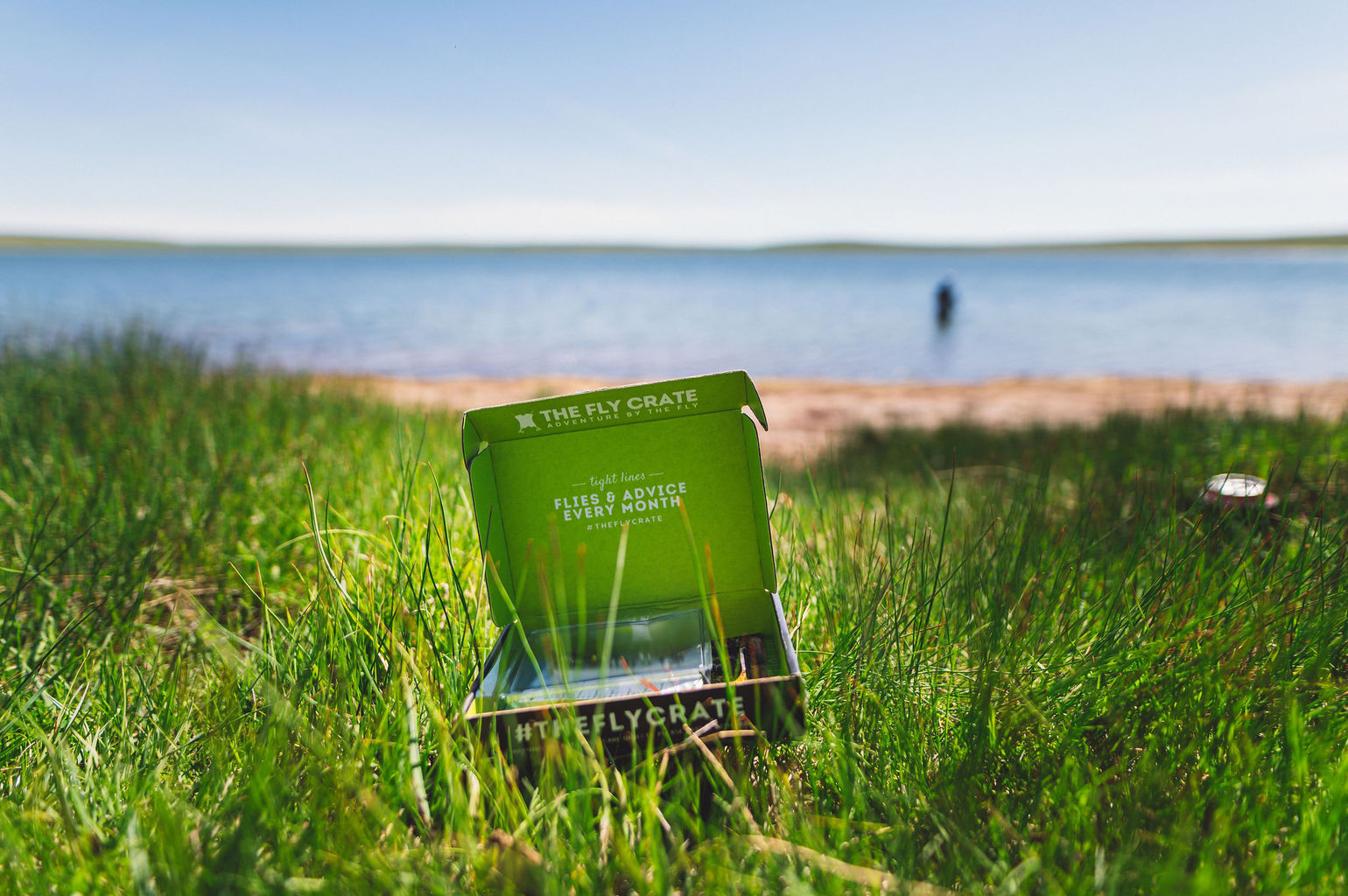How to Fly Fish Tricos
Fly fishing is a technical sport. One that is focused on matching hatches and presenting flies in a strategic way. It could be argued that deciphering and fly fishing a trico mayfly hatch is one of the most difficult hatches to fish. Small flies, delicate presentations, and the presence of thousands of tricos on the water make fishing technical.
Tricos are an important hatch for fly fishermen to understand. While there are many more popular hatches throughout the summer, like green drakes, salmon flies, and Mother’s Day caddis, these hatches occur in great intensity but in a short amount of time. This makes these hatches difficult to fish because it requires anglers to be in the right place at the right time.
Tricos hatch consistently throughout the entire summer and into early fall. This makes them present through prime feeding times and provides a consistent food source that trout will key into almost the entire season. In this article we are going to cover the lifecycle of tricos, the best fly fishing setup, presentation, trout fishing trico spinner falls, and tips for being successful on the water during a trico hatch.
Table of contents
What is a Trico?
Trico mayflies (Tricorythodes) are tiny mayflies that hatch throughout the United States. They have a life cycle that is unlike other mayfly hatches due to the timing of their hatch and spinner fall.
Tricos follow the same lifecycle as other mayflies, they go through an incomplete metamorphosis: egg, nymph, and adult. Like other mayflies, eggs are deposited on the bottom of the river. Trico nymphs hatch and live most of their lives attached to the underside of river rocks. When water temperatures reach a range of 60-68 degrees Fahrenheit, they will begin the process of hatching. Swimming to the surface of the river, emerging, finding a mate, and eventually depositing their eggs back in the river.
Tricos are identified by their small size and lack of a secondary wing. In addition, they also have three tails which are why they are called tricos. While their life cycle is similar to other mayfly lifecycles, there are some peculiarities that make this hatch extremely difficult to fish. Anglers often give up in frustration, scratching their heads and meandering back to their trucks in disgust.

What is The Life Cycle of a Trico?
Trico nymphs will emerge from underneath river rocks and swim to the surface of the river. At the meniscus, they will push their way through the river’s surface film and float on the surface of the water to dry their wings. Once their wings are dry, they take flight to streamside bushes eventually molting to become sexually mature.
Male and female tricos will congregate in large clouds over the river to mate. As they mate, they spin in circles, this is why this phase of the mayfly lifecycle is called spinners. The female will develop an egg sack on the back of her abdomen. She will return to the surface of the river and deposit her eggs completing the lifecycle.
Much of the trico activity happens at night time or in the early morning. It is also important for fly fishermen to distinguish between a male or female trico fly. Male tricos hatch and are most often black, they can also be olive or tan. Female tricos are usually olive, but turn white during spinner falls.
Male trico mayflies emerge at night and fly to the bushes. This makes the male duns more or less irrelevant to anglers. There, the males wait for female tricos to hatch. Female trico nymphs swim to the surface of the river early in the morning. The female tricos emergence and female duns floating on the surface of the river will produce some dry fly action. Both cripples and female duns drying their wings are vulnerable meals for hungry trout. This portion of the hatch can be targeted by anglers. Trout feeding frenzies occur when spinners fall after mating. Oftentimes, this blankets the river with dead insects.
Male and female trios congregate in streamside bushes, molt, and become sexually mature. The next morning, swarms of trico spinners will mate in large swirling clouds. The males will fall dead to the water immediately after mating, this is the first half of the trico spinner fall. Female tricos retreat to stream side bushes. There the females rest and generate their egg sack in preparation for egg laying. Once the egg sack is fully formed, they return to the river and deposit the egg sack. Falling spent on the surface of the water, the number of dead mayflies form rafts of tiny dead mayflies. It is important to note, that a cooler air temperature and cloud cover can delay this process and increase the length of the hatch.
The Trico’s Unique Hatching Behavior
What makes tricos unique? There are several aspects of this hatch that make tricos more difficult to understand than other mayfly species. These characteristics make fishing a trico hatches the most technical of all fly fishing hatches.
For starters, Tricos are extremely small. Unlike other hatches that we have discussed in earlier topics, these are some of the smallest insects that you will find on the river. Tricos are even smaller than midges. They can range in hook sizes from sizes #18-#26. Because tricos are so small, a trout’s feeding lane is narrow and precise. Accurate presentation into a fish feeding lane is required to catch fish. Trout will not move left or right if the fly is not put directly into their path.
In addition, they are one of the few insects that thrive in bright light situations. Preferring to hatch and congregate in flat calm water or in back eddies, fish can see every part of the angler’s presentation. Trout have the ability to study tiny flies and see every imperfection in the angler fly presentation and fly pattern. In these conditions, fly fishermen have lost the advantage. Selective fish become even more selective. Despite all of this, we talk about how to fool trout here.
To complicate matters, multiple generations of tricos can hatch at one time. This is a double edge sword. The hatch last throughout the summer. This makes tricos an important food source for trout, and it provides anglers consistent opportunities to catch fish on dries in late July and August. However, it makes the hatch extremely complicated as there can be layers of tricos all hatching at the same time.
Deciphering which part of the life cycle that trout are reacting to and eating is difficult to discern. It’s conceivable that a trico spinner fall, trico emergence, and trico duns can all be hatching and dying at the same moment. The sheer number of tricos on the water at any given moment means trout don’t need to look for food. With every rise, food is literally hitting them in the face. They are not looking for flies, nor will they move to eat flies, making fishing difficult.



What is a Trico Fly Pattern?
There are many excellent trico fly patterns to choose from. Primarily, fly fishermen should be well-stocked on flies that represent the trico spinner stage and drowned spinners. In addition, they should also have a few midge patterns or small attractor patterns to fish in tandem as sighters. Spinner fly patterns lay flush with the surface of the water’s film and the hook size is small. A sighter fly helps anglers locate where their smaller flies are in relation to the sighter fly when fished in tandem. Otherwise, you are just guessing where your fly might have landed in relation to rising fish.
First and foremost, consider the size and color of the natural insects that are present on the water. If there is a heavy spinner fall, ask yourself a few questions to determine fly selection. What color are the flies on the water: white, black, olive? What size are they, small, ultra-small? Are their wings upright like small sailboats or are they laying flat in the surface water film? Matching the correct size and color is key, especially if the spinner fall or dun’s are not blanketing the water’s surface. Trout are keyed into a specific size and color that matches the naturals present. They are actively searching for food and can afford to eat exactly what they want. Fish will move to eat when hatches are sparse.
On some streams in Montana, like the Bighorn, the spinner fall is so thick that trout merely have to open their mouths to gulp clumps of spent insects. Presentation and not fly selection in the exact feeding lane is most important in this situation. Because there are so many bugs on the water they merely have to open their mouths and food comes to them. This makes feeding lanes narrow and the actual fly pattern less important.
Selecting The Right Fly
Flies that could be considered for a trico hatch range in sizes from #18-#26, are various poly wing spinner patterns, CDC spinner patterns, and comparadun patterns. The double-wing spinner fly is a terrific fly to keep in your fly box. The double wing adds buoyancy and makes the fly a little easier to see. It can all also be used to fish B.W.O. hatches should the opportunity arise. Small parachute patterns like a parachute adams or trico parachute are also useful. Poly wing spinners are probably the most realistic-looking pattern. Poly yarn imitates the real sheen that is reflected off a trico spinners wings when laying splayed out on the water.
Small attractor flies or Hi-Vis Griffiths Gnats are excellent flies to use as sighter flies. There a lot of options that you could choose from. Essentially, any small B.W.O. or his vis midge fly will work well as your first fly: I Can See It Midge, Hi-Vis Para Ant, or Indicator Parachute. Not only will you be able to see where your trico spinner is in the water, but you will also be covering multiple food sources with a single presentation.
Don’t forget to take advantage of drowned spinners and duns. Drowned spinners and duns are one the most overlooked fishing opportunities of a trico hatch. While a lot of the fish feeding action takes place at the surface of the river, there are thousands of drowned individual insects that fish will key in on below the surface. The bead head organza nymph is a deadly pattern that can be nymphed off the back of a small dry fly in a dry dropper setup. Most of the drowned insects will be higher in the water column, so getting the fly super deep is not a priority.

Presentation and Casting
Presenting the fly and making the appropriate cast with your fly line is critical to being successful when fishing a trico hatch.
Trout will always be facing upstream into the current. In back eddies, depending on which way the water is moving, trout will always be facing into the current, but may be facing in a down stream manner. Spinners float dead in the water, so we need to present our flies in a dead drift manner. Any unnatural movement will put fish down.
Always approach rising trout from down stream out of their view. Make your first cast at the fish closest to you so as not to spook the rest of the pod. You can utilize a fly cast straight upstream and over the trout’s head. This is risky and leaves you little margin for error. Un-natural drag or if your fly line floats over the trout’s head will spook fish.
Moving upstream and slightly to the side, quartering just below rising fish at a 45-degree angle is a better approach. If you are right handed making a cast with the water moving from right to left will provide the best opportunity for a drag-free drift presentation. This is especially true if you make a upstream reach cast when you make your forward and final cast. Be careful to keep your rod tip low and make minimal false casts. Shadows will spook fish as quickly as flies dragged through the water.
Choosing the Right Leader and Tippet for a Trico Hatch
Fishing ultra-tiny flies in flat calm water calls for the most delicate presentation. Choosing the right rod and reel setup is critical in catching selective trout. Therefore, we need to use an extra light tippet and a fly rod with a soft tip.
While there are many different trout fly rods to choose from, for dry fly fishing a soft tip is best for presenting a dry fly delicately. A fly landing gently on the water won’t scare trout. In addition, the softer tipped rod with more flex protects the fine tippet from breaking on hook sets.
Our tippet needs to match our fly choice. Trico patterns are small, so choosing a fine tippet in 6x or 7x is necessary to match our small hook size and achieve the correct presentation. In some cases, an 8x tippet might be necessary. Adding fluorocarbon tippet to your leader gives you an advantage. Fluorocarbon sinks, whereas mono will float and create dimples in the water. These dimples can put weary fish down, especially on sunny days.
Longer leaders are also helpful when fishing extremely small fly patterns. Leaders in the 12′-15′ range are required. Fishing a longer leader does reduce accuracy when casting. However, it gives the fly fisherman more time to find the fly, mend the line, and achieve a naturally drifting fly.
4 Tips for Fly Fishing Tricos for Trout Fishing
1. Show Up Early and Be Prepared
Trico hatches happen early in the morning. Showing up early and having all your gear in order is essential to making the most of the hatch. Many times the easiest fish to catch are before the hatch is in full swing. With fewer bugs on the water, fish are more willing to move to eat flies and can be less selective. As the hatch develops and more insects are on the water, feeding lanes become tighter.
2. Have Two Fly Rods Rigged
Have two fly rods rigged and ready to go. Ideally, you will rig two rods with two flies each. One rod will have an attractor dry fly as your point fly and then a trico spinner as the trailer fly. The second rod will have a small parachute fly as your point fly and small bead head organza drowned nymph as the trailer fly.
This gives you the ability to change flies quickly and take advantage of every second of the hatch. In addition, if your break your tippet, develop wind knots in your leader, or receive refusals, you can offer the trout a different look and capitalize on the conditions that are presented to you.
3. Change positions
If you are fly fishing to a pod of rising fish and they are refusing your fly, change your physical position in relation to the fish before you change the fly. To the naked eye, it may appear that you are presenting a fly with a drag-free drift. However, microcurrents can create subtle drag on the fly. Change your position and try presenting the fly from a different angle. If you are still receiving refusals, then change flies and consider changing the size and color of the pattern before changing the fly.
4. Fish To Specific Fish
When trout are rising all around you, it is easy to fall int0 the trap of casting randomly and prospecting for fish. More often then not, this will result in spooked fish. Target specific fish. Take your time and make cast that are timed on their rise rhythm. With so many insects on the water, fish will eat in a rhythmic motion. Time your cast and try to predict when the fish will rise to present the fly into the small feeding window.
Take note of the rise form. Are trout porpoising, or are their heads clearing the water. These are both clues to what stage of the hatch that trout are feeding on. If their head and mouth is coming out of the water, then they are eating duns on the surface of the water. If they porpoising and all you see are shoulders and dorsal fins, then they are eating insects in the surface film.
Fly Fishing Made Easy 👍
Our Quarterly Fly Club ships 1,000’s of flies to anglers all across the United States. Receive curated fly assortments selected for the season with in-depth articles on how to fish them. Great for beginners to learn and for intermediates to discover new flies.

